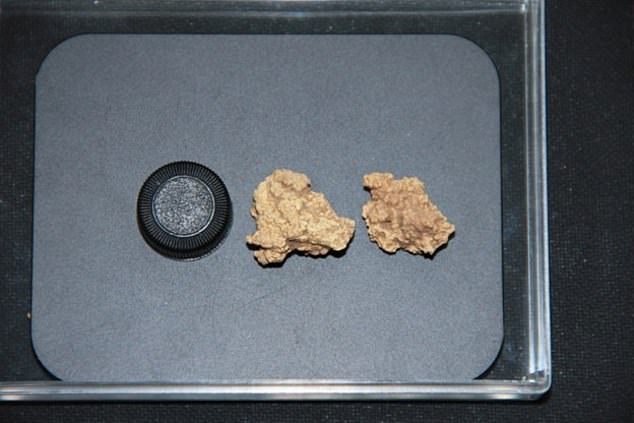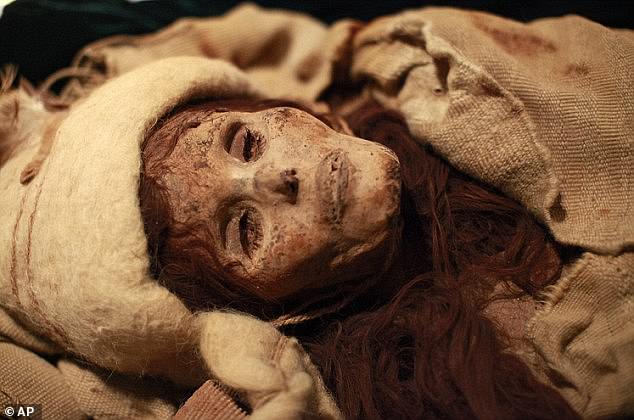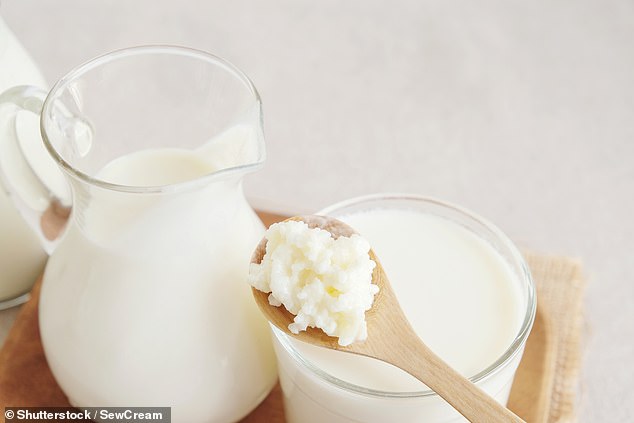A good vintage cheddar is a staple on any decent cheeseboard.
But while most varieties are aged for around 12 months, this pales in comparison to the world’s oldest cheese, which dates back 3,600 years.
The ancient cheese was discovered back in 2014 alongside mummies unearthed in China.
Now, scientists have extracted DNA from the cheese to reveal its key ingredients.
Their analysis suggests that the ancient cheese was made from kefir – a trendy fermented milk drink that’s excellent for gut health.


Around two decades ago, a team of archaeologists discovered mysterious white substances smeared on the heads and necks of several mummies found in the Xiaohe cemetery in Northwestern China’s Tarim Basin.
These mummies dated back to about 3,300 to 3,600 years ago, from the Bronze Age.
At the time, scientists thought these substances might be a type of fermented dairy product, but they couldn’t identify exactly what kind.
Now, using advanced DNA analysis, researchers have finally unravelled the mystery.
They identified cow and goat DNA in the cheese samples, and confirmed the white substances were in fact kefir cheese.
The samples from three different tombs contained species of bacteria and fungi including Lactobacillus kefiranofaciens and Pichia kudriavzevii – both commonly found in present-day kefir grains.
Kefir grains are groups of microorganisms containing multiple species of probiotic bacteria and yeast, which ferment milk into kefir cheese.
Apart from boosting the ‘good’ bacteria in our guts, kefir is thought to be beneficial for bone health, lowering blood sugar levels and improving heart health.
‘This is the oldest known cheese sample ever discovered in the world,’ Professor Qiaomei Fu, head of the ancient DNA lab at the Chinese Academy of Sciences, said.
‘Food items like cheese are extremely difficult to preserve over thousands of years, making this a rare and valuable opportunity.


‘Studying the ancient cheese in great detail can help us better understand out ancestors’ diet and culture.’
Being able to sequence the bacterial genes in the ancient kefir cheese gave the team an opportunity to track how probiotic bacteria evolved over the past 3,600 years.
Their findings challenge the long-held belief that kefir originated solely in the North Caucasus mountain region of Russia.
Instead, they suggest kefir culture has been maintained in Northwestern China’s Xinjiang region since the Bronze Age.


The study also revealed that, compared with ancient kefir bacteria, modern-day varieties are less likely to trigger an immune response in the human intestine – making it easier to digest.
‘This is an unprecedented study, allowing us how to observe how a bacterium evolved over the past 3,000 years,’ Professor Fu added.
‘By examining dairy products, we’ve gained a clearer picture of ancient human life and their interactions with the world.’
Today, kefir products include drinks, yoghurts and ice cream.
The findings were published in the journal Cell.
